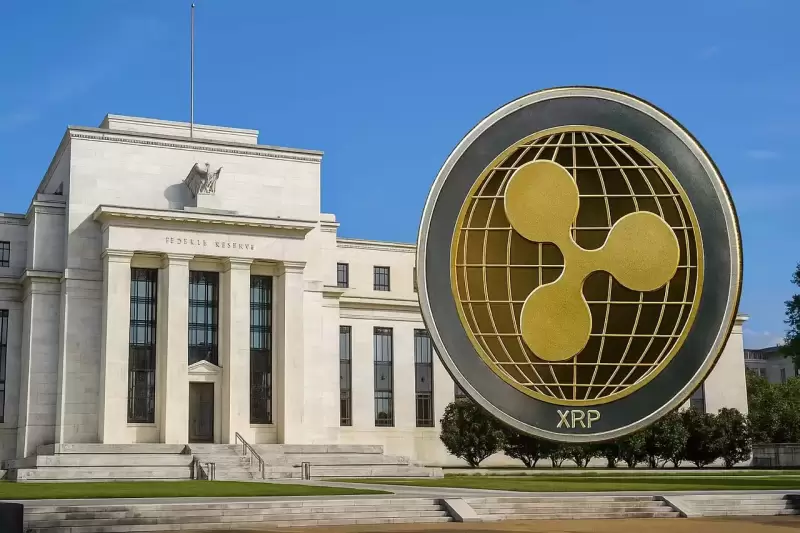 |
|
 |
|
 |
|
 |
|
 |
|
 |
|
 |
|
 |
|
 |
|
 |
|
 |
|
 |
|
 |
|
 |
|
 |
|
Cryptocurrency News Articles
Can Banks Use the Altcoin After Fed Withdrew Its Guidance?
Apr 27, 2025 at 01:05 am
On April 24, 2025, the Federal Reserve Board announced a major shift: it officially withdrew its previous guidance for banks related to crypto-asset and dollar token activities.

The dust settles on April 24, 2025, as the Federal Reserve Board pulls back prior guidance on crypto-asset and dollar token activities by state member banks. This sparks conversation among financial and crypto circles, especially regarding the implications for prominent altcoins like XRP.
The Board is rolling back supervisory letters from 2022 and 2023 that had set forth specific expectations for state member banks engaging in crypto-asset and dollar token activities.
Specifically, the letters outlined that banks should provide advance notice and obtain non-objection from the Federal Reserve before engaging with crypto-assets or dollar tokens.
However, the Federal Reserve is now removing this framework and shifting to monitor crypto-asset activities through the normal supervisory process, which is more flexible and less intrusive. This change is part of a broader effort to adapt regulation to evolving financial innovations while maintaining safety and soundness in the banking system.
What This Means for XRP
With the withdrawal of prior guidance, banks are no longer required to seek pre-approval for activities involving digital assets, including XRP. In theory, this opens the door wider for banks to explore using XRP and similar cryptocurrencies, especially in roles like:
• Liquidity management
• Cross-border payments
• New financial products
However, while the removal of formal guidance removes a significant bureaucratic hurdle, it does not mean that “anything goes.” Banks must still comply with broader supervisory expectations around risk management, anti-money laundering (AML) compliance, and overall operational safety. In fact, the Federal Reserve stated that it will continue to monitor crypto-asset activities through standard supervision, which implies that banks using XRP must be prepared to demonstrate sound practices and risk mitigation strategies during regular examinations.
Is This a Green Light for XRP Adoption?
This regulatory shift could be seen as an encouraging sign for altcoins like XRP. Banks now have greater autonomy to engage with digital assets without facing automatic regulatory roadblocks.
Moreover, institutions like Ripple, the company behind XRP, have long been positioning themselves as a bridge between traditional finance and crypto, and this change could enhance the attractiveness of using XRP for institutional applications.
Yet caution remains crucial. Banks are likely to move incrementally, beginning with pilot programs and limited-scope initiatives before they embrace full-scale crypto integration.
Additionally, legal clarity surrounding XRP — particularly its classification as a security or non-security — remains a lingering factor that banks will continue to watch closely as they make decisions about using specific digital assets.
In essence, this regulatory shift appears to be softening the tone and reducing the administrative burden, but it does not dismantle the core expectations for sound risk management and compliance, which are still paramount.
Disclaimer:info@kdj.com
The information provided is not trading advice. kdj.com does not assume any responsibility for any investments made based on the information provided in this article. Cryptocurrencies are highly volatile and it is highly recommended that you invest with caution after thorough research!
If you believe that the content used on this website infringes your copyright, please contact us immediately (info@kdj.com) and we will delete it promptly.
-

-

-

- Lightchain AI (LCHAIN) Raises Over $20M During Presale, Tokens Priced at $0.007
- May 12, 2025 at 01:45 pm
- Pi Coin's impressive rise has highlighted the power of investing early in innovative blockchain projects. Now, attention is shifting to Lightchain AI, a new player that has already raised over $20.1 million during its presale, with tokens priced at just $0.007.
-

-

-

-

-

- Key Takeaways: An emergency DAO vote has been announced by Lido contributors following the detection of a compromised oracle key operated by Chorus One.
- May 12, 2025 at 01:35 pm
- Investigation is ongoing.Incident details, root cause updates, vote details — all in the forum post: https://t.co/vn4gq8W82g
-


























































